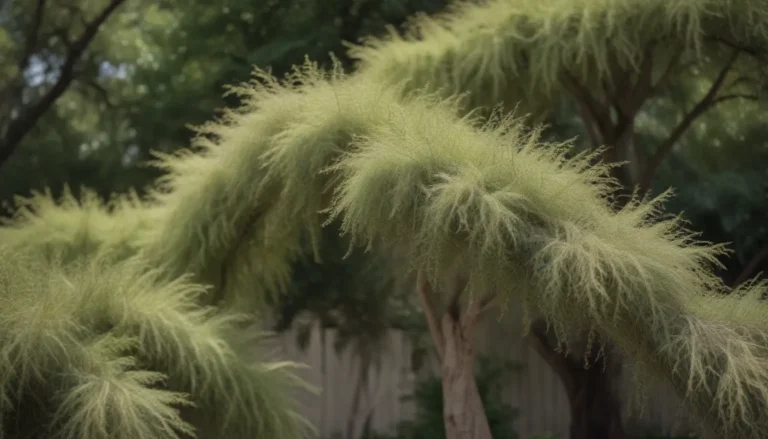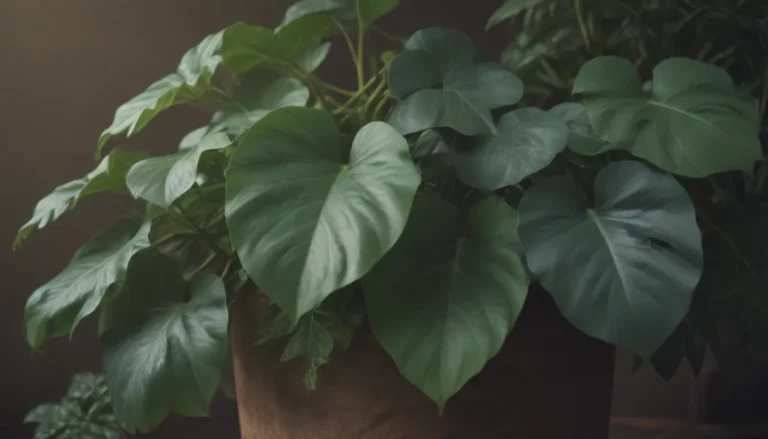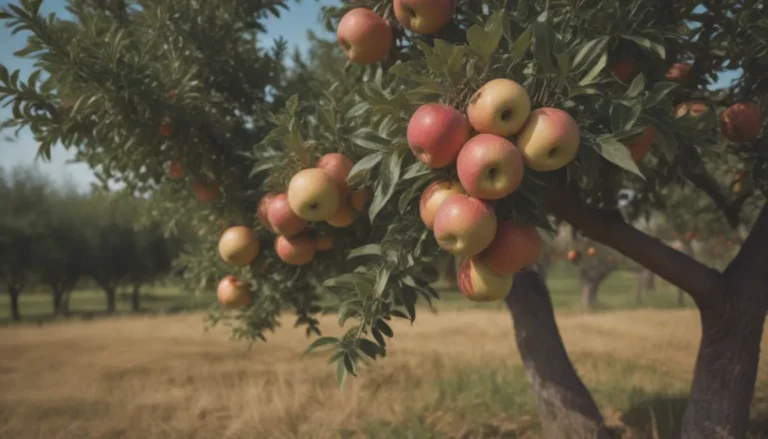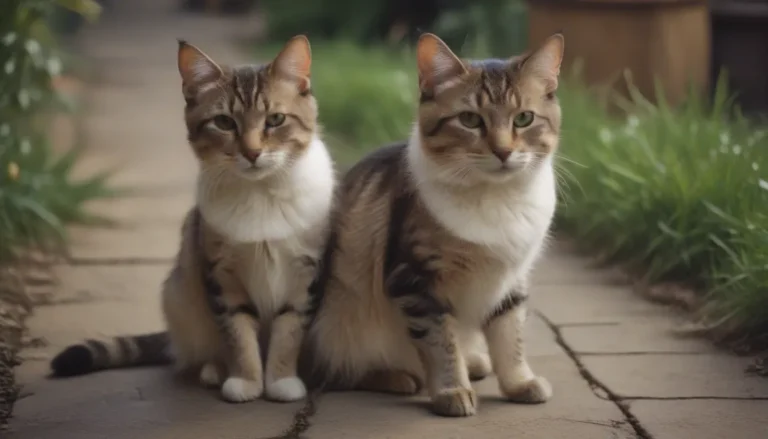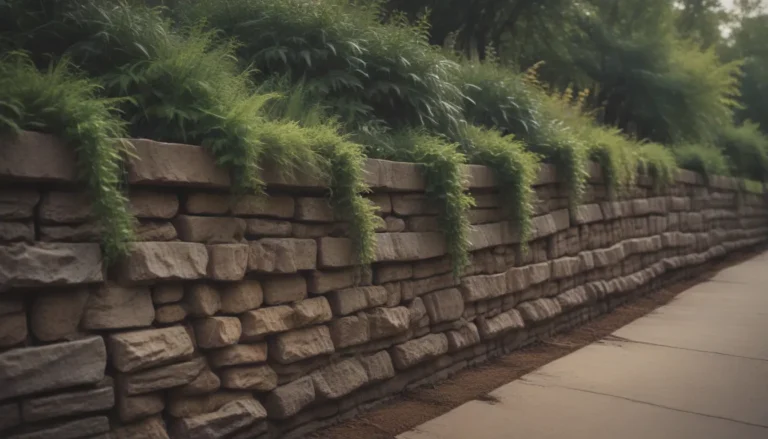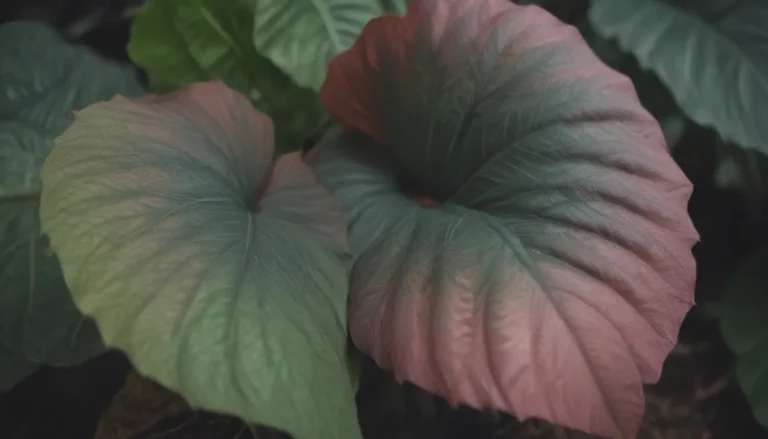32 Plants to Attract Butterflies to Your Yard: An In-Depth Guide
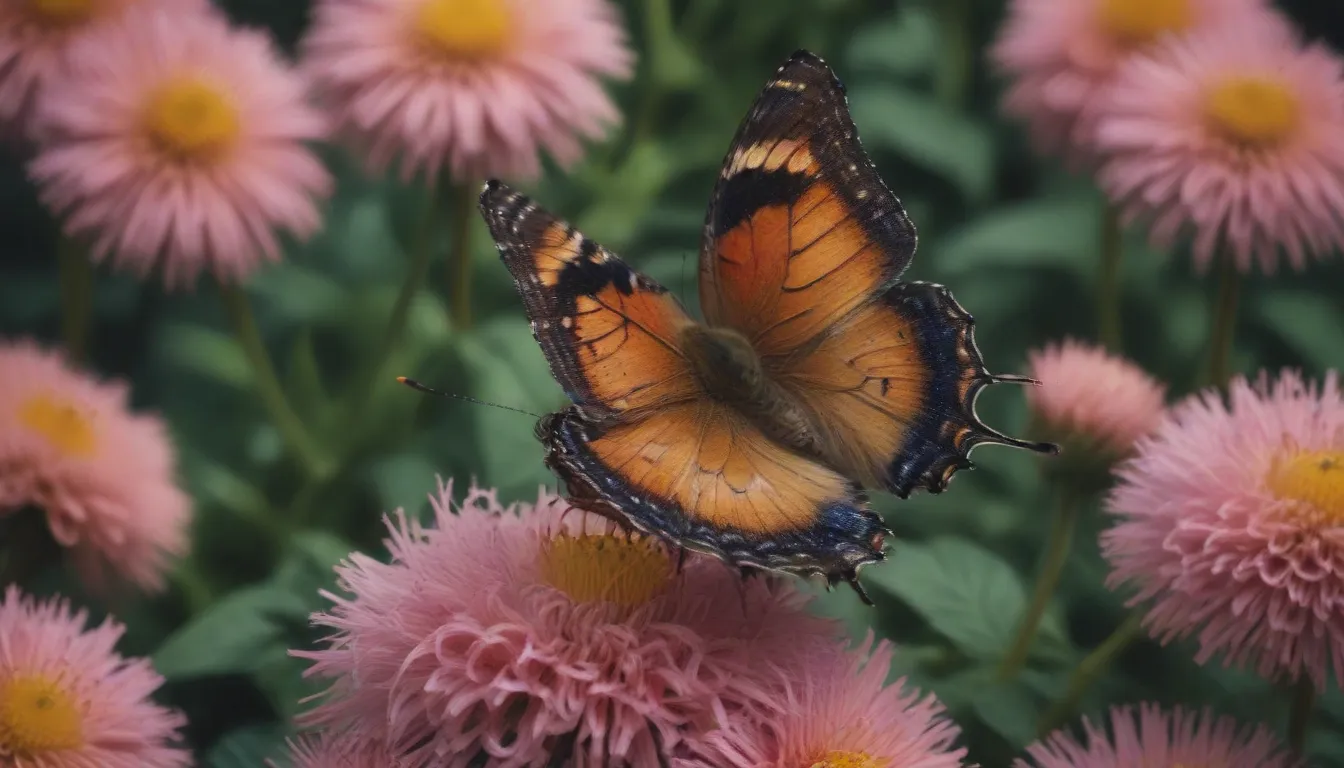
Are you looking to add some fluttering beauty to your yard while also supporting essential pollinators like bees and hummingbirds? Look no further! In this detailed guide, we’ll explore 32 plants, including annuals, perennials, shrubs, and trees, that attract various butterfly species. By incorporating these plants into your garden, you’ll create a haven for these lovely creatures and contribute to the biodiversity of your outdoor space.
Why Attract Butterflies?
Butterflies are not only mesmerizing to watch as they flit from flower to flower, but they also play a crucial role in pollinating plants. By attracting butterflies to your yard, you can help support local ecosystems and promote a healthy environment for both flora and fauna.
Benefits of Attracting Butterflies:
- Adds visual appeal to your garden with vibrant colors and graceful movements
- Supports pollination of flowers and fruits
- Contributes to the overall biodiversity of your yard
- Creates a peaceful and harmonious outdoor environment
Milkweed: A Must-Have for Monarchs
One of the most important plants for attracting butterflies, especially the threatened monarch butterfly, is milkweed. By planting native milkweed species in your yard, you can provide essential food sources for monarchs and help support their population. Keep in mind that tropical milkweed can disrupt monarch migration in northern climates, so opt for native varieties.
USDA Hardiness Zones: Varies by species
Light: Full sun
Butterflies It Attracts: Monarchs
Aster: Late-Season Beauty
Asters are a popular choice for attracting butterflies, blooming in late summer and fall when many other plants have faded. With a wide variety of aster species available, opt for native varieties like New England aster to attract butterflies and other pollinators. However, be cautious with white wood asters, as they do not serve as host plants for certain butterfly species.
USDA Hardiness Zones: Varies by species
Light: Full sun
Butterflies It Attracts: Various species
Bidens: Bright Blooms for Butterflies
Bidens, also known as beggarticks, are prolific bloomers with vibrant yellow or orange daisy-like flowers. These plants thrive in rich, well-draining soil and are drought and heat tolerant. While they are perennials in warmer climates, they can be grown as annuals in northern regions, making them a versatile choice for attracting butterflies.
USDA Hardiness Zones: Varies by species
Light: Full sun
Butterflies It Attracts: Various species
Birch Tree: A Delight for Butterflies
Despite their shorter lifespan compared to other hardwood trees, birch trees are excellent choices for attracting butterflies. With several native species available, such as the bog birch, these trees provide essential nectar sources for butterflies while adding beauty to your landscape.
USDA Hardiness Zones: Varies by species
Light: Full sun to partial shade
Butterflies It Attracts: Various species
Black Cherry Tree: Beauty with Benefits
While black cherry trees may pose some maintenance challenges, they are invaluable as larval host plants for butterflies. By pruning them regularly, you can control their growth and provide a welcoming habitat for butterfly populations in your yard.
USDA Hardiness Zones: Varies by species
Light: Full sun to partial shade
Butterflies It Attracts: Various species
Blazing Star: Unique Blooms for Butterflies
Blazing star, a native perennial wildflower, features striking flower heads with star-like blossoms arranged on upright spires. With grass-like leaves that turn bronze in the fall, this plant adds interest to your garden while attracting butterflies with its nectar-rich blooms.
USDA Hardiness Zones: Varies by species
Light: Full sun
Butterflies It Attracts: Various species
Butterfly Weed: Slow and Steady Wins the Race
As a member of the milkweed genus, butterfly weed may take some time to establish in your garden, but its bright orange-to-yellow flowers are well worth the wait. Once in bloom, these vibrant clusters attract butterflies throughout the late spring and summer, providing essential nectar sources for their survival.
USDA Hardiness Zones: Varies by species
Light: Full sun
Butterflies It Attracts: Various species
Beware of Invasive Species
While butterfly bush may sound appealing, it is classified as an invasive species in many regions and may not provide suitable habitat for butterflies. Opt for native plants like milkweed and aster to attract butterflies while supporting local ecosystems.
Dill: A Culinary Delight for Butterflies
Dill is not only a flavorful herb for your kitchen but also a host plant for the eastern black swallowtail butterfly. By leaving some dill plants untouched in your garden, you can provide a welcoming habitat for butterfly larvae while enjoying fresh herbs for your recipes.
USDA Hardiness Zones: Varies by species
Light: Full sun
Butterflies It Attracts: Eastern black swallowtail
Flowering Dogwood: Beauty in Every Season
With its distinctive flowers in spring and vibrant foliage in fall, flowering dogwood is a delightful addition to any yard. This small tree thrives in acidic soils and partial shade, making it a versatile choice for attracting butterflies while adding visual interest to your landscape.
USDA Hardiness Zones: Varies by species
Light: Partial shade
Butterflies It Attracts: Various species
Golden Alexander: Luminous Blooms for Butterflies
Golden Alexander, a short-lived perennial wildflower, brightens up the landscape with its vibrant yellow starburst umbels. Blooming in May and June, this native plant forms small colonies and provides essential nectar sources for butterflies while adding a pop of color to your garden.
USDA Hardiness Zones: Varies by species
Light: Full sun to partial shade
Butterflies It Attracts: Various species
Goldenrod: Tall and Resilient
Goldenrod, with its fluffy golden flower spikes, is a hardy perennial that thrives in poor soil conditions. Once considered a weed, this plant is now valued for its resilience and beauty. With numerous species and cultivars to choose from, you can easily find the perfect goldenrod for your garden.
USDA Hardiness Zones: Varies by species
Light: Full sun to partial shade
Butterflies It Attracts: Various species
Hibiscus: Tropical Charm for Butterflies
The large flowers of hibiscus make it a popular choice for gardeners seeking to attract butterflies. Serving as a host plant for the grey hairstreak butterfly, hibiscus adds tropical flair to your landscape while providing essential nectar sources for these delicate insects.
USDA Hardiness Zones: Varies by species
Light: Full sun
Butterflies It Attracts: Grey hairstreak
Hollyhock Mallow: Low-Maintenance Beauty
This perennial flower, with its pink saucer-shaped blooms, brightens up any garden with minimal effort. While hollyhocks are short-lived perennials, they offer an extended bloom period from early summer through fall, attracting butterflies and adding a touch of elegance to your outdoor space.
USDA Hardiness Zones: Varies by species
Light: Full sun
Butterflies It Attracts: Various species
Ironweed: Majestic Wildflower for Butterflies
Ironweed, a towering perennial wildflower native to the eastern United States, is a popular choice for wildflower gardens. With its impressive height and striking blooms, ironweed attracts butterflies while adding vertical interest to your landscape. Choose a smaller variety for compact spaces.
USDA Hardiness Zones: Varies by species
Light: Full sun
Butterflies It Attracts: Various species
Joe Pye Weed: A Butterfly Magnet
Known collectively as Joe Pye weed, these late-blooming wildflowers are native to North America and attract a variety of butterfly species. With different growth habits and flower colors, Joe Pye weed adds diversity to your garden while providing essential nectar sources for butterflies.
USDA Hardiness Zones: Varies by species
Light: Full sun to partial shade
Butterflies It Attracts: Various species
Lilac: Timeless Beauty for Butterflies
Lilacs are cherished for their fragrant flowers and vibrant colors, making them a classic choice for attracting butterflies. With hundreds of varieties available, you can select lilacs in a range of colors to suit your aesthetic while providing essential nectar sources for these delicate insects.
USDA Hardiness Zones: Varies by species
Light: Full sun
Butterflies It Attracts: Various species
Mexican Sunflower: Heat-Loving Bloomer
Mexican sunflowers thrive in hot climates and attract butterflies with their bold colors and abundant blooms. While they are perennials in their native habitat, they can be grown as annuals in cooler regions, making them an excellent choice for attracting butterflies to your garden.
USDA Hardiness Zones: Varies by species
Light: Full sun
Butterflies It Attracts: Various species
Parsley: A Favorite Among Butterflies
Parsley, a biennial herb often grown as an annual, is a favorite host plant for the eastern black swallowtail. By leaving some stalks of parsley untouched in your garden, you can provide essential habitat for butterfly larvae while enjoying fresh herbs for your culinary creations.
USDA Hardiness Zones: Varies by species
Light: Full sun to partial shade
Butterflies It Attracts: Eastern black swallowtail
Passionflower: Enchanting Vines for Butterflies
Passionflower vines, native to North America, are prized for their unique blooms and serve as essential host plants for butterflies like the gulf fritillary. With varieties like blue passionflower and yellow passionflower, these vines add a touch of elegance to your garden while attracting butterflies with their nectar-rich flowers.
USDA Hardiness Zones: Varies by species
Light: Full sun to partial shade
Butterflies It Attracts: Gulf fritillary
Pawpaw Tree: A Hidden Gem for Butterflies
Pawpaw trees, native to North America, are not only known for their delicious fruit but also their value as host plants for butterflies like the zebra swallowtail. While caterpillars feed on the leaves of the pawpaw tree, this rarely poses a threat to the health of the tree, making it a valuable addition to any butterfly-friendly garden.
USDA Hardiness Zones: Varies by species
Light: Full sun to partial shade
Butterflies It Attracts: Zebra swallowtail
Pentas: Container Beauty for Butterflies
If you’re short on garden space, consider adding pentas, also known as the Egyptian star cluster, to your outdoor containers. These profusely blooming tropical plants are botanically perennials but are often grown as annuals, making them a versatile and eye-catching choice for attracting butterflies to your yard.
USDA Hardiness Zones: Varies by species
Light: Full sun
Butterflies It Attracts: Various species
Purple Coneflower: Drifts of Color for Butterflies
Purple coneflower is not only visually stunning but also easy to grow from seed. With its hardy nature and tolerance to drought, this plant rewards patience by producing long-lasting blooms that attract butterflies. Add drifts of purple coneflower to your garden to create a vibrant and butterfly-friendly landscape.
USDA Hardiness Zones: Varies by species
Light: Full sun
Butterflies It Attracts: Various species
Pussy Willow: Moisture-Loving Beauty
Pussy willow, known for its fluffy catkins, thrives in moist soil conditions and attracts butterflies with its early blooms. While typically found in wetland areas, you can grow pussy willow in your yard with consistent moisture, providing essential nectar sources for butterflies while adding a touch of whimsy to your landscape.
USDA Hardiness Zones: Varies by species
Light: Full sun to partial shade
Butterflies It Attracts: Various species
Redbud: Early Beauty Despite Lifespan
Redbud trees are a sight to behold with their pea-like flowers that appear in late winter or early spring. While these trees have a relatively short lifespan, they provide essential nectar sources for butterflies and attract pollinators with their early blooms. Add a redbud tree to your yard for a burst of color and wildlife-friendly charm.
USDA Hardiness Zones: Varies by species
Light: Full sun to partial shade
Butterflies It Attracts: Various species
Sedum: Nectar-Rich Treat for Monarchs
Sedum, a favorite of the monarch butterfly, offers essential nectar sources for these iconic insects. With hundreds of species and varieties to choose from, including groundcovers and upright types, sedum adds visual interest to your garden while attracting butterflies with its nectar-rich blooms.
USDA Hardiness Zones: Varies by species
Light: Full sun
Butterflies It Attracts: Monarchs
Spicebush: Aromatic Delight for Butterflies
Spicebush, an aromatic shrub with yellow flowers and red berries, is a favorite among butterflies for its unique fragrance and flavor. With male and female flowers on separate plants, spicebush provides essential nectar sources for butterflies while adding a touch of spice to your garden.
USDA Hardiness Zones: Varies by species
Light: Full sun to partial shade
Butterflies It Attracts: Various species
Sunflower: Cheerful Blooms for Butterflies
Sunflowers are beloved for their cheery blooms and are known for attracting a variety of pollinators, including butterflies. Serving as host plants for the caterpillars of butterflies like the silvery checkerspot, sunflowers add vibrant color to your garden while providing essential nectar sources for these delicate insects.
USDA Hardiness Zones: Varies by species
Light: Full sun
Butterflies It Attracts: Silvery checkerspot
Tulip Tree: Towering Elegance for Butterflies
Native to eastern North America, tulip trees are fast-growing and tall, with striking tulip-like flowers in the spring. With brilliant foliage that turns yellow in the fall, tulip trees attract butterflies with their nectar-rich blooms and provide essential habitat for these iconic insects.
USDA Hardiness Zones: Varies by species
Light: Full sun to partial shade
Butterflies It Attracts: Various species
Verbena: Hardy Beauty for Butterflies
While many verbena varieties are grown as annuals, native species like American blue vervein provide essential nectar sources for butterflies. With purplish-blue flowers that bloom from July to September, verbena thrives in medium to wet soil conditions, making it a versatile choice for attracting butterflies to your garden.
USDA Hardiness Zones: Varies by species
Light: Full sun
Butterflies It Attracts: Various species
Violet: Unassuming Beauties for Butterflies
Violets, often considered weeds, are valuable early nectar sources for butterflies and other pollinators. While these plants may seem common in your yard, leaving a few violets untouched can attract butterflies and provide essential food sources for these delicate insects.
USDA Hardiness Zones: Varies by species
Light: Full sun to partial shade
Butterflies It Attracts: Various species
White Turtlehead: Elegance in Bloom
White turtlehead, a host plant for the Baltimore checkerspot butterfly, offers ivory blooms and a late summer to early fall flowering period. While it may not be as showy as some other varieties, white turtlehead adds elegance to your garden while attracting butterflies with its nectar-rich flowers.
USDA Hardiness Zones: Varies by species
Light: Partial shade
Butterflies It Attracts: Baltimore checkerspot
Zinnia: Summer Beauty for Butterflies
Zinnias are known for their vibrant blooms and long-lasting flowers, attracting butterflies throughout the summer and into fall. By skipping deadheading, you can provide essential nectar sources for butterflies while enjoying the colorful display of zinnias in your garden.
USDA Hardiness Zones: Varies by species
Light: Full sun
Butterflies It Attracts: Various species
Now, Get Planting!
While adding plants with pretty flowers is a great start, attracting butterflies to your yard involves more than just aesthetics. To create a welcoming habitat for butterflies, be sure to include a variety of host plants that cater to different species’ needs. By diversifying your garden with a mix of annuals, perennials, shrubs, and trees, you can attract a wide range of butterflies and enjoy the beauty of these delicate insects in your yard.
Learn More
For further information on creating a butterfly-friendly garden, explore additional resources such as the North Carolina State University Cooperative Extension’s guide on Plants That Host Butterfly Larvae and the Alabama Butterfly Atlas’s insights on the Silvery Checkerspot butterfly.
In conclusion, attracting butterflies to your yard is not only a visually rewarding endeavor but also a meaningful way to support local ecosystems and promote biodiversity. By incorporating a diverse range of butterfly-friendly plants into your garden, you can create a thriving habitat for these delicate insects while enjoying the beauty and tranquility they bring to your outdoor space. Happy planting and happy butterfly watching!
By expanding on the original article’s content and adding new sections, examples, and insights, this comprehensive guide provides valuable information for readers looking to attract butterflies to their yards. With a conversational tone, detailed plant descriptions, and practical tips, this article serves as a go-to resource for butterfly enthusiasts seeking to enhance their outdoor spaces.
